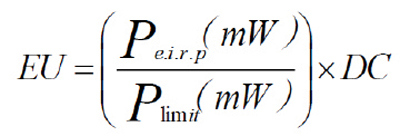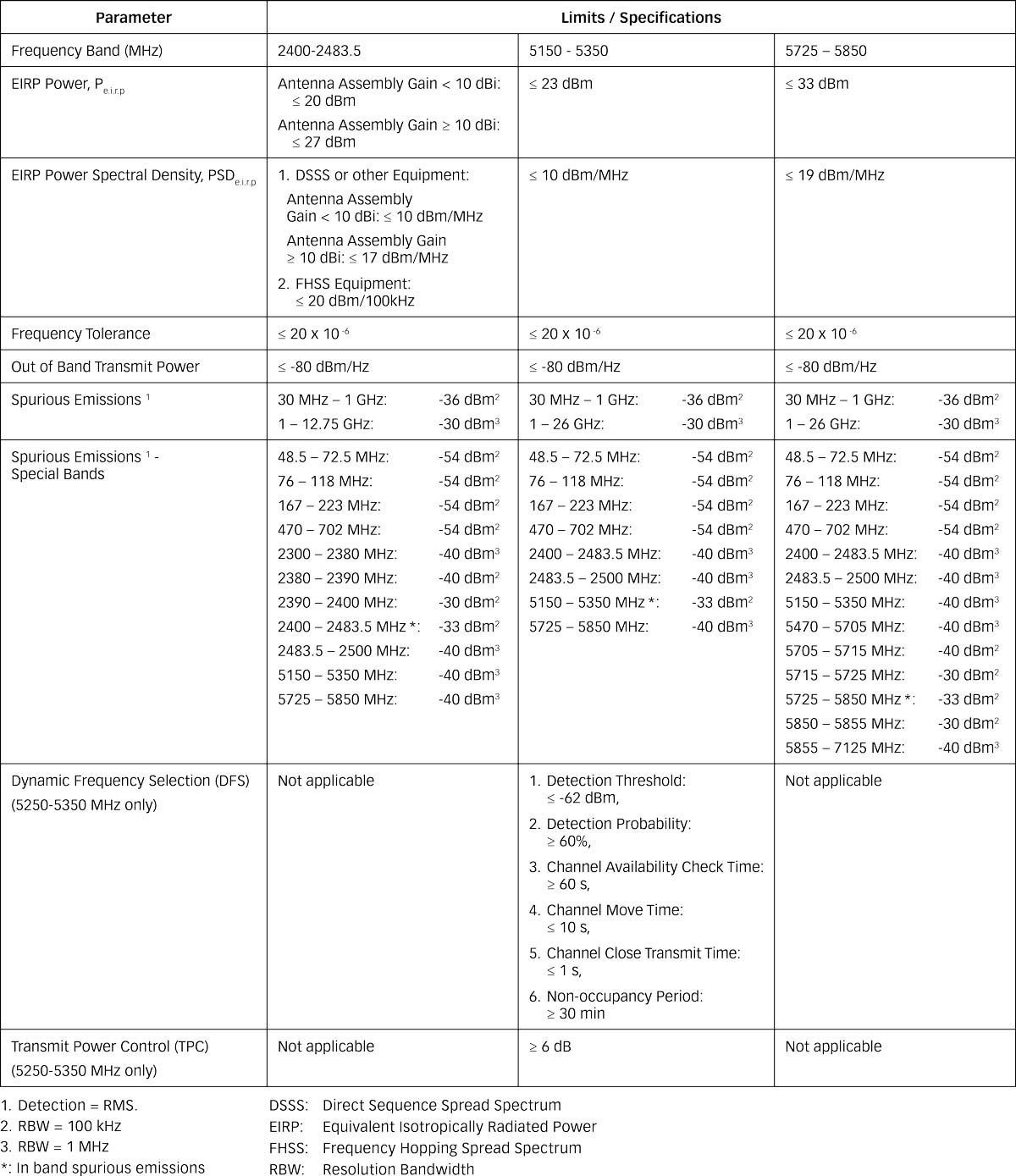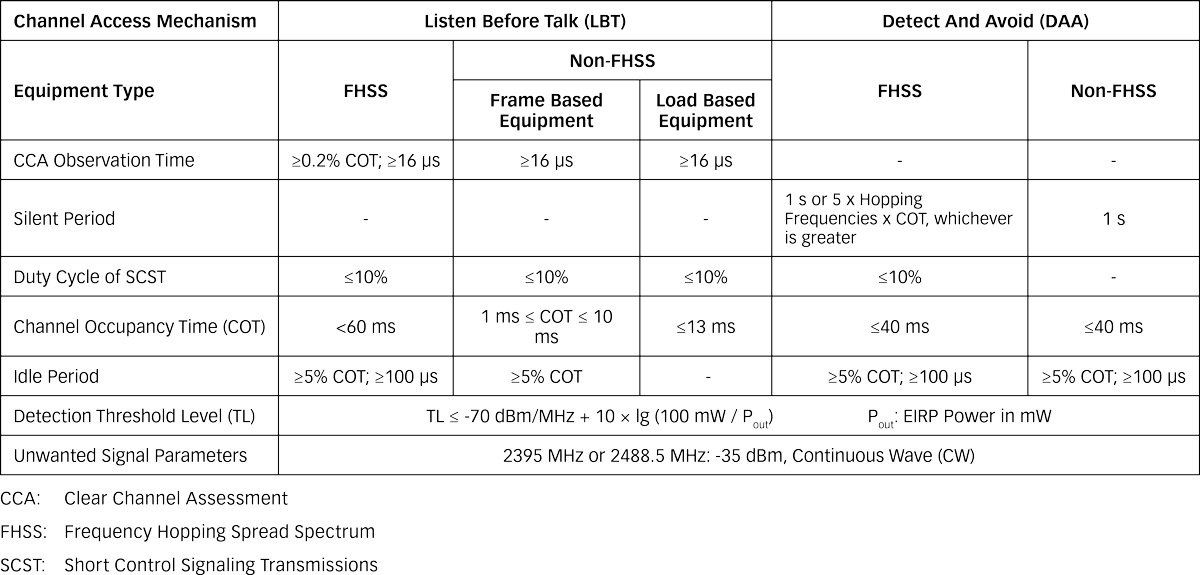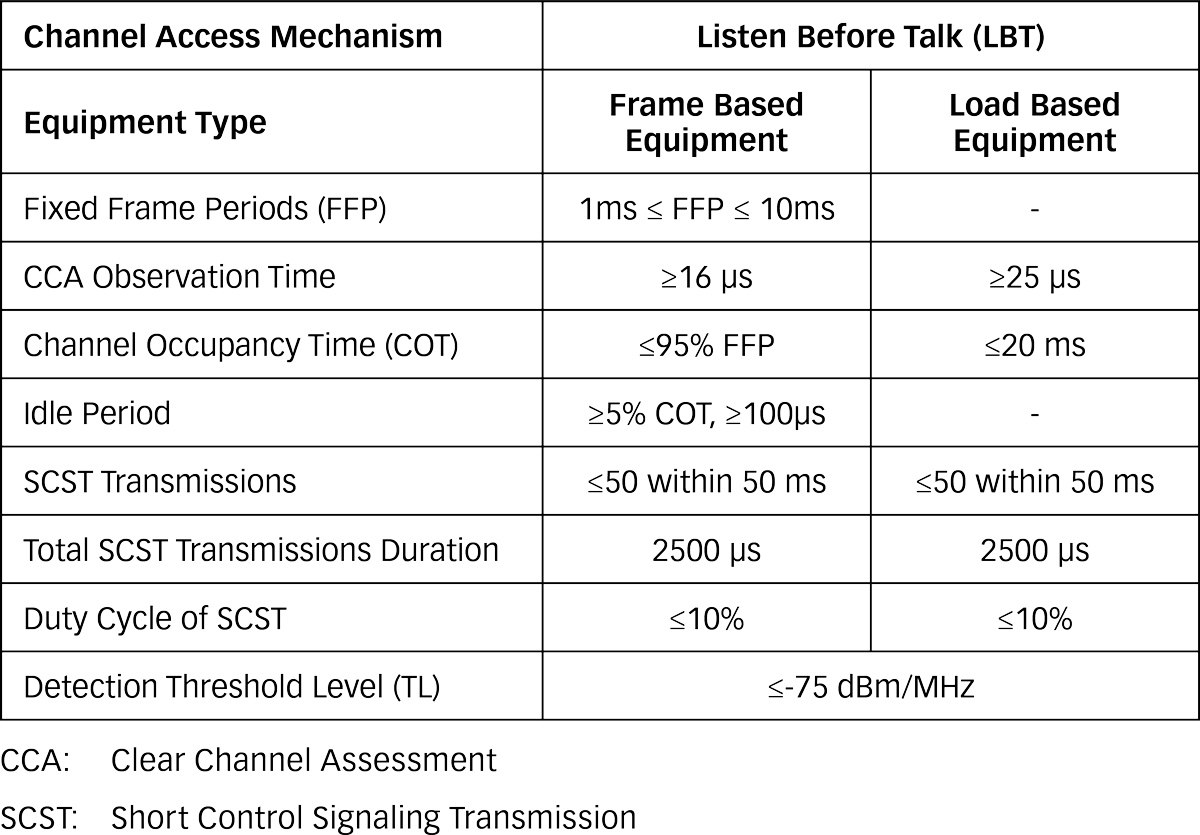China’s Latest Regulation on 2.4 GHz and 5 GHz Equipment
MIIT 2021 No. 129 Updates China’s Requirements for Multiple Types of Radio Services

n October 13, 2021, the Ministry of Industry and Information Technology of the People’s Republic of China (MIIT) issued MIIT 2021 No. 129, “Notice on Strengthening and Standardizing the Radio Management of 2400 MHz, 5100 MHz, and 5800 MHz bands.” This regulation came into effect on January 1, 2022, with a two-year transitional period.
Scope
MIIT 2021 No. 129 applies to equipment operating in the 2400-2483.5 MHz, 5150-5350 MHz, and 5725-5850 MHz frequency bands which are allocated for multiple types of radio services, including fixed, mobile, radio navigation, fixed-satellite, earth exploration-satellite, satellite radiolocation, or space research applications. The 2400-2483.5 MHz and 5725-5850 MHz bands are also designated for industrial, scientific, and medical (ISM) applications that emit electromagnetic energy, which is subject to a different regulation. Radio stations or equipment do not have exclusive access to or use of the 2400-2483.5 MHz, 5150-5350 MHz, and 5725‑5850 MHz frequency bands.
The 2400-2483.5 MHz frequency band can be used for radio communications systems utilizing wideband radio access (including wireless local area network (LAN)), Bluetooth transceivers, and point-to-point transmission. The 5150-5350 MHz frequency band can be used for radio communications systems utilizing wideband radio access (including wireless LAN), but is restricted to indoor use only (except devices installed in vehicles). The 5725-5850 MHz frequency band can be used for radio communication systems utilizing wideband radio access (including wireless LAN), point-to-point transmission, and electronic toll collections (ETC).
Technical Requirements
The general technical requirements under MIIT 2021 No. 129 are summarized in Table 1 on page 36. Antenna assembly gain and beamforming gain are taken into account for equipment employing multiple antennas, when performing equivalent isotropically radiated power (EIRP, Pe.i.r.p.) and power spectrum density (PSDe.i.r.p.) measurements.
Radio equipment operating in the 5250-5350 MHz frequency band must incorporate transmit power control (TPC) and dynamic frequency selection (DFS) functions and shall not include any feature designed to turn off the DFS function. TPC is a feature that enables a device to dynamically switch between several transmission power levels in the data transmission process. For equipment without TPC function, limits of Pe.i.r.p and PSDe.i.r.p. shall be 3 dB lower. DFS is a mechanism that dynamically detects signals from other systems and avoids co-channel operation with these systems.
Wireless LAN equipment with public network IP address allocation function shall support IPv6 protocol and enable the IPv6 address allocation function by default.
Equipment operating in the 2400-2483.5 MHz frequency band shall implement either a “Listen Before Talk” (LBT) or a “Detect And Avoid” (DAA)-based channel access mechanism. Adaptivity parameters and specifications for this frequency band are summarized in Table 2.
Equipment operating in the 5150-5350 MHz and 5725-5850 MHz frequency bands shall implement an LBT-based channel access mechanism. Adaptivity parameters and specifications for these frequency bands are summarized in Table 3 on page 38.
For equipment operating in the 2400-2483.5 MHz frequency band, and not supporting any one of the above adaptivity mechanisms, and for the electronic toll collections (ETC) equipment operating in the 5725-5850 MHz frequency band, an “equivalent usage rate” mechanism applies. “Equivalent usage rate” (EU) shall not be greater than 10%, as calculated by using the following formula:

Where EU is the equivalent usage rate, DC is the duty cycle, and Plimit is EIRP power limit.

Effective October 15, 2023, equipment that falls under the scope of this regulation must comply with the technical requirements stipulated in MIIT 2021 No. 129.
Equipment Authorization Procedure
Equipment authorization procedure “Radio Transmission Equipment Type Approval” applies to equipment operating in the 2400-2483.5 MHz, 5150‑5350 MHz, and 5725-5850 MHz frequency bands, except for low-power short range devices (SRDs) and ISM equipment. All certified equipment is listed on the MIIT online service platform at https://ythzxfw.miit.gov.cn/resultQuery.
Regulations for the low power SRDs and ISM equipment are stipulated in China MIIT 2019 No. 52. Type approval is not required, but certain statements must be included in the user manual accompanying the equipment. Required technical parameters for the low-power short-range devices (SRDs) and ISM equipment operating in the 2400-2483.5 MHz and 5725-5850 MHz are listed in Table 4 for reference.
Transition
The requirements of MIIT 2021 No. 129 came into effect January 1, 2022, with a transitional period until October 15, 2023. The Regulation supersedes previous issued relevant regulations including, but not limited to, the following four regulations:
- “Notice on Adjusting 2.4 GHz Frequency Band Transmit Power Limits and Relevant Matters”
- “Notice on the Use of 5.8 GHz Frequency Band”
- “Notice on the Special Use of Intelligent Traffic Management of 5.8 GHz Frequency Band Wireless Short Range Communication Systems and Relevant Matters”
- “Notice on Use of 5150-5350 MHz Frequency Band Wireless Access Systems and Relevant Matters”
Effective October 15, 2023, equipment that falls under the scope of this regulation must comply with the technical requirements stipulated in MIIT 2021 No. 129. Prior to October 15, 2023, equipment may comply with technical requirements stipulated in the precedent regulations. Certificates applicable to equipment complying with the precedent regulations and certified after January 1, 2022 will expire on December 31, 2025.
Conclusion
Technical requirements from China MIIT 2021 No. 129 are significantly different from their precedent regulations. Complying with adaptivity, DFS, and TPS is now required. Spurious emissions limits apply to additional frequency bands. An EU rate adaptivity mechanism is introduced. Addressing these new technical requirements at the early stage of product development will help shorten the overall design cycle and speed up the introduction of new products to China’s market.
Acknowledgments
The author would like to thank Jessy Zhang of G&M Compliance for providing relevant information regarding China MIIT 2021 No. 129.
The author wishes to express her sincere appreciation to Wayne Owens of HYTORC for his support.
- “Notice on Strengthening and Standardizing the Radio Management of 2400 MHz, 5100 MHz, and 5800 MHz bands,” China MIIT 2021 No. 129, issued October 13, 2021.
https://wap.miit.gov.cn/zwgk/zcwj/wjfb/tz/art/2021/art_e4ae71252eab42928daf0ea620976e4e.html - Interpretation on “Notice on Strengthening and Standardizing the Radio Management of 2400 MHz, 5100 MHz, and 5800 MHz bands,” issued October 14, 2021.
https://wap.miit.gov.cn/zwgk/zcjd/art/2021/art_f9d24f82c2b24a16b357ae883f21a65e.html - “Low Power Short Range Devices Regulations,” China MIIT 2019 No. 52.
https://www.miit.gov.cn/jgsj/wgj/wjfb/art/2020/art_792ab84586c34b64bb391eb6496c0953.html - “Low Power Short Range Devices Categories and Technical Requirements,” China MIIT 2019 No. 52 Attachment.
https://www.miit.gov.cn/cms_files/filemanager/oldfile/miit/n1146285/n1146352/n3054355/n3057735/n3057748/n8004149/c8006552/part/8006563.pdf - “Notice on the Use of 5.8 GHz Frequency Band,” China MIIT 2002 No. 277, issued September 5, 2009.
http://www.srrc.org.cn/article1362.aspx - “Notice on Adjusting 2.4 GHz Frequency Band Transmit Power Limits and Related Matters,” China MIIT 2002 No. 353, issued May 30, 2019.
https://ahca.miit.gov.cn/wzpz/xwtt/art/2020/art_a34aec22d220441e90db0a66870bcaf8.html - “Notice on the Use of 5150-5350 MHz Frequency Band Wireless Access Systems and Related Matters,” China MIIT 2012 No. 620, issued January 30, 2013.
- “Notice on the Special Use of Intelligent Traffic Management of 5.8 GHz Frequency Band Wireless Short Range Communication Systems and Related Matters,” China MIIT 2003 No. 225.
- “Wideband transmission systems; Data transmission equipment operating in the 2,4 GHz band; Harmonised Standard for access to radio spectrum,” ETSI EN 300 328 V2.2.2 (2019-07).
https://www.etsi.org/deliver/etsi_en/300300_300399/300328/02.02.02_60/en_300328v020202p.pdf - “5 GHz RLAN; Harmonised Standard covering the essential requirements of article 3.2 of Directive 2014/53/EU,” ETSI EN 301 893 V2.1.1 (2017-05).

Grace Lin is a Regulatory Compliance Engineer at HYTORC. Prior to HYTORC, she was an EMC Staff Engineer and a TCB Reviewer at Intertek. Lin can be reached at glin@hytorc.com.



